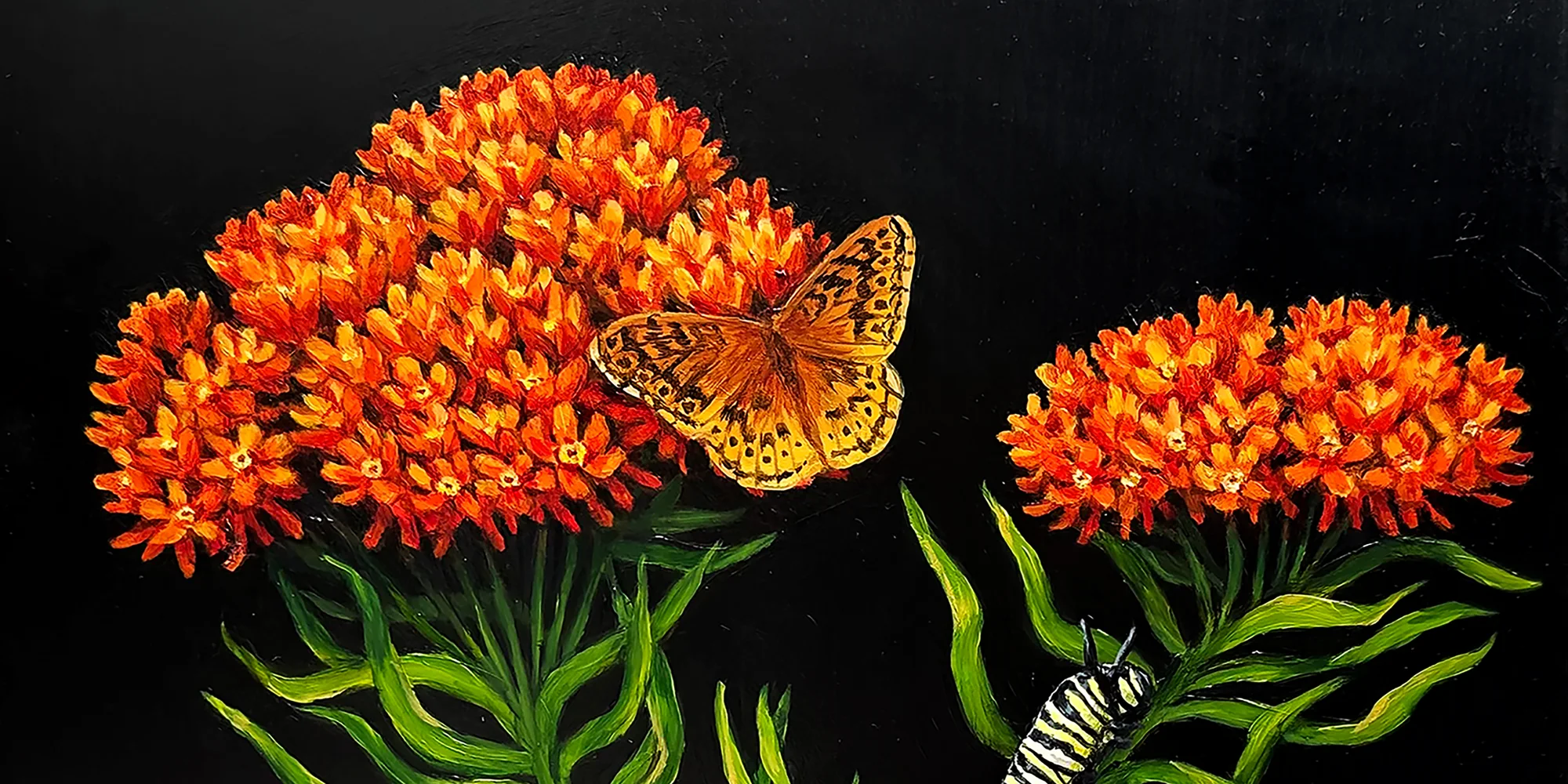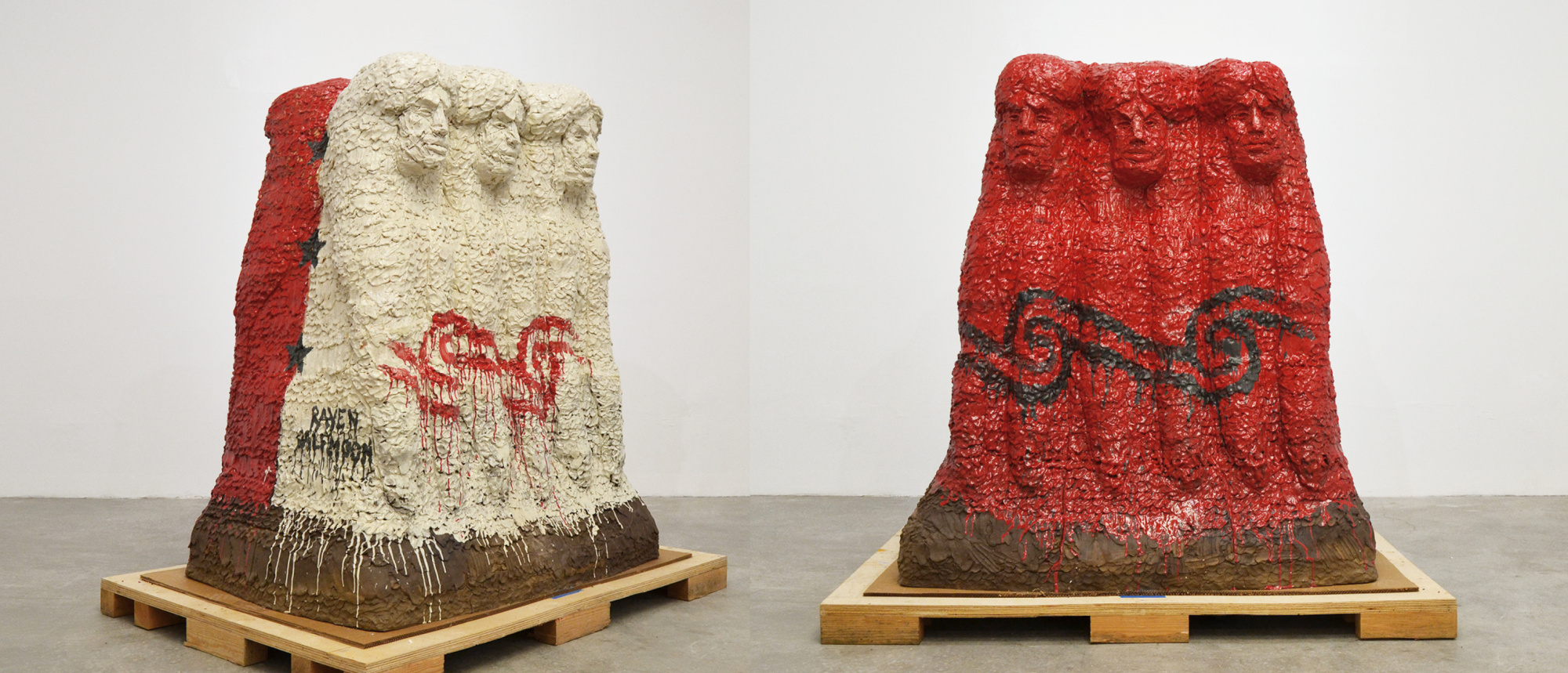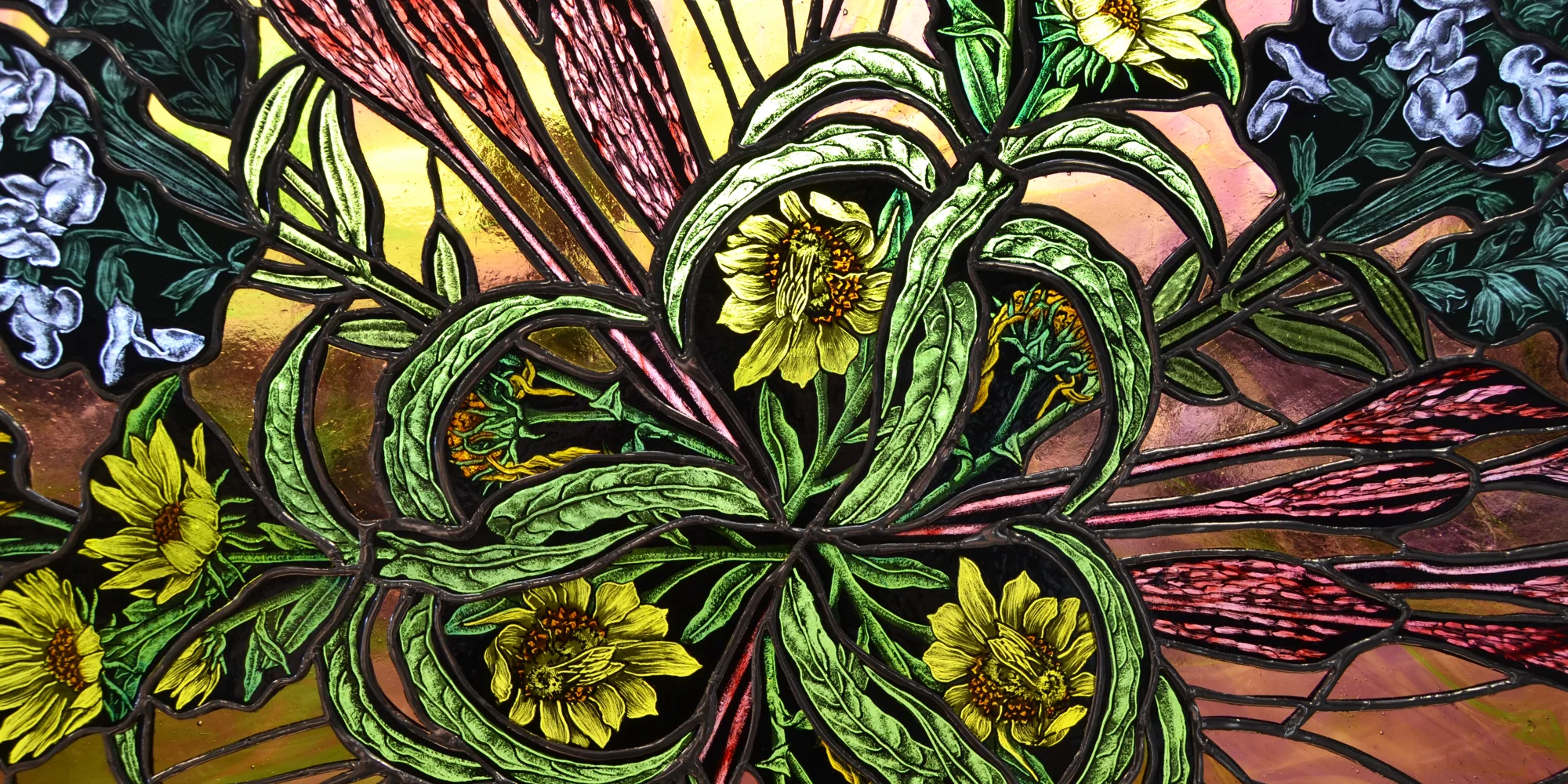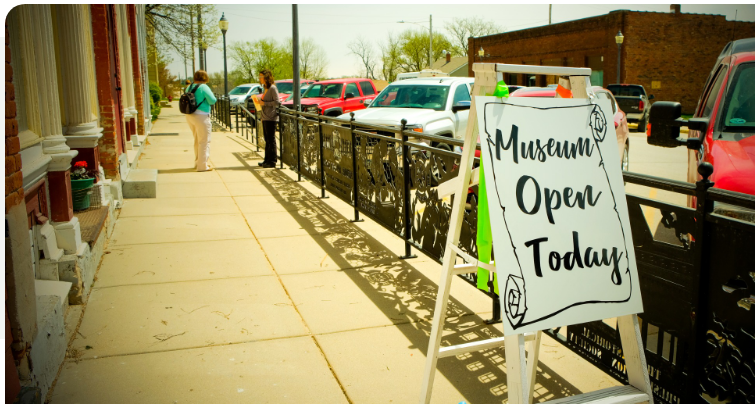
A collection of portraits of the artist’s houseplants and paintings inspired by flowers from their garden. Explored in a mix of grey-scale and full color.
— dedicated to promoting the growth and appreciation of the arts in the Omaha community.
|
Sunday
|
Monday
|
Tuesday
|
Wednesday
|
Thursday
|
Friday
|
Saturday
|
|---|---|---|---|---|---|---|
|
4 events,

A collection of portraits of the artist’s houseplants and paintings inspired by flowers from their garden. Explored in a mix of grey-scale and full color. 
A series of plant portraits sparked by the folkloric history of Mandrakes and continued on as an exploration of other plant species gaining consciousness and freedom of movement.
$15

With inspirations that orbit centuries from ancient Indigenous pottery to Moai statues to Land Art, Halfmoon interrogates the intersection of tradition, history, gender, and personal experience.
Free

From wordplay with the actual letters that comprise “BLACK,” to utilizing the expanse of shades of black house paint—including as Nightfall, Soot, Ebony Field, and Black Beauty—to posing the question, “If the color black had a sound, what would it be?,” Benjamin calls attention to the color’s deep historical and social resonance.
Free
|
2 events,

A series of plant portraits sparked by the folkloric history of Mandrakes and continued on as an exploration of other plant species gaining consciousness and freedom of movement.
$15
|
1 event,

A series of plant portraits sparked by the folkloric history of Mandrakes and continued on as an exploration of other plant species gaining consciousness and freedom of movement.
$15
|
3 events,

A series of plant portraits sparked by the folkloric history of Mandrakes and continued on as an exploration of other plant species gaining consciousness and freedom of movement.
$15

With inspirations that orbit centuries from ancient Indigenous pottery to Moai statues to Land Art, Halfmoon interrogates the intersection of tradition, history, gender, and personal experience.
Free

From wordplay with the actual letters that comprise “BLACK,” to utilizing the expanse of shades of black house paint—including as Nightfall, Soot, Ebony Field, and Black Beauty—to posing the question, “If the color black had a sound, what would it be?,” Benjamin calls attention to the color’s deep historical and social resonance.
Free
|
3 events,

A series of plant portraits sparked by the folkloric history of Mandrakes and continued on as an exploration of other plant species gaining consciousness and freedom of movement.
$15

With inspirations that orbit centuries from ancient Indigenous pottery to Moai statues to Land Art, Halfmoon interrogates the intersection of tradition, history, gender, and personal experience.
Free

From wordplay with the actual letters that comprise “BLACK,” to utilizing the expanse of shades of black house paint—including as Nightfall, Soot, Ebony Field, and Black Beauty—to posing the question, “If the color black had a sound, what would it be?,” Benjamin calls attention to the color’s deep historical and social resonance.
Free
|
3 events,

A series of plant portraits sparked by the folkloric history of Mandrakes and continued on as an exploration of other plant species gaining consciousness and freedom of movement.
$15

With inspirations that orbit centuries from ancient Indigenous pottery to Moai statues to Land Art, Halfmoon interrogates the intersection of tradition, history, gender, and personal experience.
Free

From wordplay with the actual letters that comprise “BLACK,” to utilizing the expanse of shades of black house paint—including as Nightfall, Soot, Ebony Field, and Black Beauty—to posing the question, “If the color black had a sound, what would it be?,” Benjamin calls attention to the color’s deep historical and social resonance.
Free
|
3 events,

A series of plant portraits sparked by the folkloric history of Mandrakes and continued on as an exploration of other plant species gaining consciousness and freedom of movement.
$15

With inspirations that orbit centuries from ancient Indigenous pottery to Moai statues to Land Art, Halfmoon interrogates the intersection of tradition, history, gender, and personal experience.
Free

From wordplay with the actual letters that comprise “BLACK,” to utilizing the expanse of shades of black house paint—including as Nightfall, Soot, Ebony Field, and Black Beauty—to posing the question, “If the color black had a sound, what would it be?,” Benjamin calls attention to the color’s deep historical and social resonance.
Free
|
|
3 events,

A series of plant portraits sparked by the folkloric history of Mandrakes and continued on as an exploration of other plant species gaining consciousness and freedom of movement.
$15

With inspirations that orbit centuries from ancient Indigenous pottery to Moai statues to Land Art, Halfmoon interrogates the intersection of tradition, history, gender, and personal experience.
Free

From wordplay with the actual letters that comprise “BLACK,” to utilizing the expanse of shades of black house paint—including as Nightfall, Soot, Ebony Field, and Black Beauty—to posing the question, “If the color black had a sound, what would it be?,” Benjamin calls attention to the color’s deep historical and social resonance.
Free
|
1 event,

A series of plant portraits sparked by the folkloric history of Mandrakes and continued on as an exploration of other plant species gaining consciousness and freedom of movement.
$15
|
3 events,

A series of plant portraits sparked by the folkloric history of Mandrakes and continued on as an exploration of other plant species gaining consciousness and freedom of movement.
$15
|
2 events,

With inspirations that orbit centuries from ancient Indigenous pottery to Moai statues to Land Art, Halfmoon interrogates the intersection of tradition, history, gender, and personal experience.
Free

From wordplay with the actual letters that comprise “BLACK,” to utilizing the expanse of shades of black house paint—including as Nightfall, Soot, Ebony Field, and Black Beauty—to posing the question, “If the color black had a sound, what would it be?,” Benjamin calls attention to the color’s deep historical and social resonance.
Free
|
2 events,

With inspirations that orbit centuries from ancient Indigenous pottery to Moai statues to Land Art, Halfmoon interrogates the intersection of tradition, history, gender, and personal experience.
Free

From wordplay with the actual letters that comprise “BLACK,” to utilizing the expanse of shades of black house paint—including as Nightfall, Soot, Ebony Field, and Black Beauty—to posing the question, “If the color black had a sound, what would it be?,” Benjamin calls attention to the color’s deep historical and social resonance.
Free
|
3 events,

Using glass as a medium to utilize the transmission of light and brilliancy of the glass colors to enhance the beauty of her subjects, Borgschulte hopes to capture the viewer’s interest as hers has been captured by nature.
$15

With inspirations that orbit centuries from ancient Indigenous pottery to Moai statues to Land Art, Halfmoon interrogates the intersection of tradition, history, gender, and personal experience.
Free

From wordplay with the actual letters that comprise “BLACK,” to utilizing the expanse of shades of black house paint—including as Nightfall, Soot, Ebony Field, and Black Beauty—to posing the question, “If the color black had a sound, what would it be?,” Benjamin calls attention to the color’s deep historical and social resonance.
Free
|
4 events,

Using glass as a medium to utilize the transmission of light and brilliancy of the glass colors to enhance the beauty of her subjects, Borgschulte hopes to capture the viewer’s interest as hers has been captured by nature.
$15
-

Join A Local Collective X Omaha Places for their favorites birthday market! 
With inspirations that orbit centuries from ancient Indigenous pottery to Moai statues to Land Art, Halfmoon interrogates the intersection of tradition, history, gender, and personal experience.
Free

From wordplay with the actual letters that comprise “BLACK,” to utilizing the expanse of shades of black house paint—including as Nightfall, Soot, Ebony Field, and Black Beauty—to posing the question, “If the color black had a sound, what would it be?,” Benjamin calls attention to the color’s deep historical and social resonance.
Free
|
|
4 events,

Using glass as a medium to utilize the transmission of light and brilliancy of the glass colors to enhance the beauty of her subjects, Borgschulte hopes to capture the viewer’s interest as hers has been captured by nature.
$15

With inspirations that orbit centuries from ancient Indigenous pottery to Moai statues to Land Art, Halfmoon interrogates the intersection of tradition, history, gender, and personal experience.
Free

From wordplay with the actual letters that comprise “BLACK,” to utilizing the expanse of shades of black house paint—including as Nightfall, Soot, Ebony Field, and Black Beauty—to posing the question, “If the color black had a sound, what would it be?,” Benjamin calls attention to the color’s deep historical and social resonance.
Free
-

Come tour our museums! A "Museum Crawl" will be held on Sunday, July 14th, from noon until 4 pm. Visit these quaint small-town museums! |
1 event,

Using glass as a medium to utilize the transmission of light and brilliancy of the glass colors to enhance the beauty of her subjects, Borgschulte hopes to capture the viewer’s interest as hers has been captured by nature.
$15
|
1 event,

Using glass as a medium to utilize the transmission of light and brilliancy of the glass colors to enhance the beauty of her subjects, Borgschulte hopes to capture the viewer’s interest as hers has been captured by nature.
$15
|
3 events,

Using glass as a medium to utilize the transmission of light and brilliancy of the glass colors to enhance the beauty of her subjects, Borgschulte hopes to capture the viewer’s interest as hers has been captured by nature.
$15

With inspirations that orbit centuries from ancient Indigenous pottery to Moai statues to Land Art, Halfmoon interrogates the intersection of tradition, history, gender, and personal experience.
Free

From wordplay with the actual letters that comprise “BLACK,” to utilizing the expanse of shades of black house paint—including as Nightfall, Soot, Ebony Field, and Black Beauty—to posing the question, “If the color black had a sound, what would it be?,” Benjamin calls attention to the color’s deep historical and social resonance.
Free
|
4 events,

Using glass as a medium to utilize the transmission of light and brilliancy of the glass colors to enhance the beauty of her subjects, Borgschulte hopes to capture the viewer’s interest as hers has been captured by nature.
$15

With inspirations that orbit centuries from ancient Indigenous pottery to Moai statues to Land Art, Halfmoon interrogates the intersection of tradition, history, gender, and personal experience.
Free

From wordplay with the actual letters that comprise “BLACK,” to utilizing the expanse of shades of black house paint—including as Nightfall, Soot, Ebony Field, and Black Beauty—to posing the question, “If the color black had a sound, what would it be?,” Benjamin calls attention to the color’s deep historical and social resonance.
Free
-
|
4 events,

Using glass as a medium to utilize the transmission of light and brilliancy of the glass colors to enhance the beauty of her subjects, Borgschulte hopes to capture the viewer’s interest as hers has been captured by nature.
$15

With inspirations that orbit centuries from ancient Indigenous pottery to Moai statues to Land Art, Halfmoon interrogates the intersection of tradition, history, gender, and personal experience.
Free

From wordplay with the actual letters that comprise “BLACK,” to utilizing the expanse of shades of black house paint—including as Nightfall, Soot, Ebony Field, and Black Beauty—to posing the question, “If the color black had a sound, what would it be?,” Benjamin calls attention to the color’s deep historical and social resonance.
Free

Join PACE for an exploration into the art of miniature photography. New Masters Photographer, Reagan D Pufall will walk you through his style of photography. Using kiddy pools, cotton, and lamps he creates a window into other planets!
Free
|
3 events,

Using glass as a medium to utilize the transmission of light and brilliancy of the glass colors to enhance the beauty of her subjects, Borgschulte hopes to capture the viewer’s interest as hers has been captured by nature.
$15

With inspirations that orbit centuries from ancient Indigenous pottery to Moai statues to Land Art, Halfmoon interrogates the intersection of tradition, history, gender, and personal experience.
Free

From wordplay with the actual letters that comprise “BLACK,” to utilizing the expanse of shades of black house paint—including as Nightfall, Soot, Ebony Field, and Black Beauty—to posing the question, “If the color black had a sound, what would it be?,” Benjamin calls attention to the color’s deep historical and social resonance.
Free
|
|
3 events,

Using glass as a medium to utilize the transmission of light and brilliancy of the glass colors to enhance the beauty of her subjects, Borgschulte hopes to capture the viewer’s interest as hers has been captured by nature.
$15

With inspirations that orbit centuries from ancient Indigenous pottery to Moai statues to Land Art, Halfmoon interrogates the intersection of tradition, history, gender, and personal experience.
Free

From wordplay with the actual letters that comprise “BLACK,” to utilizing the expanse of shades of black house paint—including as Nightfall, Soot, Ebony Field, and Black Beauty—to posing the question, “If the color black had a sound, what would it be?,” Benjamin calls attention to the color’s deep historical and social resonance.
Free
|
1 event,

Using glass as a medium to utilize the transmission of light and brilliancy of the glass colors to enhance the beauty of her subjects, Borgschulte hopes to capture the viewer’s interest as hers has been captured by nature.
$15
|
1 event,

Using glass as a medium to utilize the transmission of light and brilliancy of the glass colors to enhance the beauty of her subjects, Borgschulte hopes to capture the viewer’s interest as hers has been captured by nature.
$15
|
3 events,

Using glass as a medium to utilize the transmission of light and brilliancy of the glass colors to enhance the beauty of her subjects, Borgschulte hopes to capture the viewer’s interest as hers has been captured by nature.
$15

With inspirations that orbit centuries from ancient Indigenous pottery to Moai statues to Land Art, Halfmoon interrogates the intersection of tradition, history, gender, and personal experience.
Free

From wordplay with the actual letters that comprise “BLACK,” to utilizing the expanse of shades of black house paint—including as Nightfall, Soot, Ebony Field, and Black Beauty—to posing the question, “If the color black had a sound, what would it be?,” Benjamin calls attention to the color’s deep historical and social resonance.
Free
|
3 events,

Using glass as a medium to utilize the transmission of light and brilliancy of the glass colors to enhance the beauty of her subjects, Borgschulte hopes to capture the viewer’s interest as hers has been captured by nature.
$15

With inspirations that orbit centuries from ancient Indigenous pottery to Moai statues to Land Art, Halfmoon interrogates the intersection of tradition, history, gender, and personal experience.
Free

From wordplay with the actual letters that comprise “BLACK,” to utilizing the expanse of shades of black house paint—including as Nightfall, Soot, Ebony Field, and Black Beauty—to posing the question, “If the color black had a sound, what would it be?,” Benjamin calls attention to the color’s deep historical and social resonance.
Free
|
5 events,

Join us for an enchanting evening at our Hoff Fourth Friday event, just before the captivating performance of "On Golden Pond" at Chanticleer Theater.
Free

Using glass as a medium to utilize the transmission of light and brilliancy of the glass colors to enhance the beauty of her subjects, Borgschulte hopes to capture the viewer’s interest as hers has been captured by nature.
$15

With inspirations that orbit centuries from ancient Indigenous pottery to Moai statues to Land Art, Halfmoon interrogates the intersection of tradition, history, gender, and personal experience.
Free

From wordplay with the actual letters that comprise “BLACK,” to utilizing the expanse of shades of black house paint—including as Nightfall, Soot, Ebony Field, and Black Beauty—to posing the question, “If the color black had a sound, what would it be?,” Benjamin calls attention to the color’s deep historical and social resonance.
Free
-

The PACE Studio Artists offer a dazzling array of talents including oil, acrylics, pastel, photography, sculpture, home goods, media entertainment, and much more.
Free
|
3 events,

Using glass as a medium to utilize the transmission of light and brilliancy of the glass colors to enhance the beauty of her subjects, Borgschulte hopes to capture the viewer’s interest as hers has been captured by nature.
$15

With inspirations that orbit centuries from ancient Indigenous pottery to Moai statues to Land Art, Halfmoon interrogates the intersection of tradition, history, gender, and personal experience.
Free

From wordplay with the actual letters that comprise “BLACK,” to utilizing the expanse of shades of black house paint—including as Nightfall, Soot, Ebony Field, and Black Beauty—to posing the question, “If the color black had a sound, what would it be?,” Benjamin calls attention to the color’s deep historical and social resonance.
Free
|
|
3 events,

Using glass as a medium to utilize the transmission of light and brilliancy of the glass colors to enhance the beauty of her subjects, Borgschulte hopes to capture the viewer’s interest as hers has been captured by nature.
$15

With inspirations that orbit centuries from ancient Indigenous pottery to Moai statues to Land Art, Halfmoon interrogates the intersection of tradition, history, gender, and personal experience.
Free

From wordplay with the actual letters that comprise “BLACK,” to utilizing the expanse of shades of black house paint—including as Nightfall, Soot, Ebony Field, and Black Beauty—to posing the question, “If the color black had a sound, what would it be?,” Benjamin calls attention to the color’s deep historical and social resonance.
Free
|
1 event,

Using glass as a medium to utilize the transmission of light and brilliancy of the glass colors to enhance the beauty of her subjects, Borgschulte hopes to capture the viewer’s interest as hers has been captured by nature.
$15
|
1 event,

Using glass as a medium to utilize the transmission of light and brilliancy of the glass colors to enhance the beauty of her subjects, Borgschulte hopes to capture the viewer’s interest as hers has been captured by nature.
$15
|
3 events,

Using glass as a medium to utilize the transmission of light and brilliancy of the glass colors to enhance the beauty of her subjects, Borgschulte hopes to capture the viewer’s interest as hers has been captured by nature.
$15

With inspirations that orbit centuries from ancient Indigenous pottery to Moai statues to Land Art, Halfmoon interrogates the intersection of tradition, history, gender, and personal experience.
Free

From wordplay with the actual letters that comprise “BLACK,” to utilizing the expanse of shades of black house paint—including as Nightfall, Soot, Ebony Field, and Black Beauty—to posing the question, “If the color black had a sound, what would it be?,” Benjamin calls attention to the color’s deep historical and social resonance.
Free
|
3 events,

Using glass as a medium to utilize the transmission of light and brilliancy of the glass colors to enhance the beauty of her subjects, Borgschulte hopes to capture the viewer’s interest as hers has been captured by nature.
$15

With inspirations that orbit centuries from ancient Indigenous pottery to Moai statues to Land Art, Halfmoon interrogates the intersection of tradition, history, gender, and personal experience.
Free

From wordplay with the actual letters that comprise “BLACK,” to utilizing the expanse of shades of black house paint—including as Nightfall, Soot, Ebony Field, and Black Beauty—to posing the question, “If the color black had a sound, what would it be?,” Benjamin calls attention to the color’s deep historical and social resonance.
Free
|
5 events,

First Friday Art Walk in the Benson Creative District
Free

Using glass as a medium to utilize the transmission of light and brilliancy of the glass colors to enhance the beauty of her subjects, Borgschulte hopes to capture the viewer’s interest as hers has been captured by nature.
$15
-

With inspirations that orbit centuries from ancient Indigenous pottery to Moai statues to Land Art, Halfmoon interrogates the intersection of tradition, history, gender, and personal experience.
Free

From wordplay with the actual letters that comprise “BLACK,” to utilizing the expanse of shades of black house paint—including as Nightfall, Soot, Ebony Field, and Black Beauty—to posing the question, “If the color black had a sound, what would it be?,” Benjamin calls attention to the color’s deep historical and social resonance.
Free
|
4 events,

Using glass as a medium to utilize the transmission of light and brilliancy of the glass colors to enhance the beauty of her subjects, Borgschulte hopes to capture the viewer’s interest as hers has been captured by nature.
$15

With inspirations that orbit centuries from ancient Indigenous pottery to Moai statues to Land Art, Halfmoon interrogates the intersection of tradition, history, gender, and personal experience.
Free

From wordplay with the actual letters that comprise “BLACK,” to utilizing the expanse of shades of black house paint—including as Nightfall, Soot, Ebony Field, and Black Beauty—to posing the question, “If the color black had a sound, what would it be?,” Benjamin calls attention to the color’s deep historical and social resonance.
Free
|